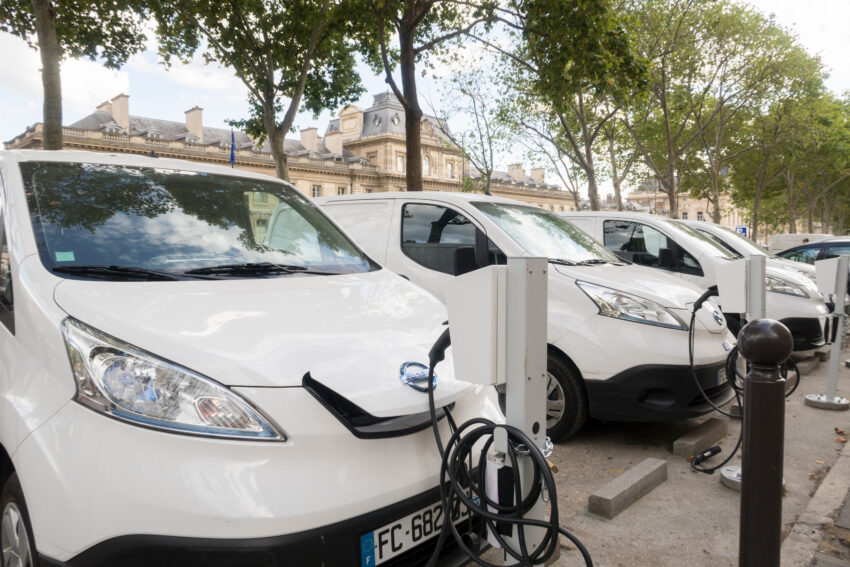Electric commercial vehicles – Will they become the norm?
In 2021 the electric vehicle industry celebrated the 20th anniversary of the introduction of the first mass-market hybrid vehicles and the 10th anniversary of practical electrical cars.
2022 is a year that many believe is the tipping point, with plug-in hybrids, or PHEVs, and battery-electric vehicles will finally gain mainstream status and start to overtake internal combustion vehicles.
Global sales of electric cars raced forward in 2020, rising by 43% to a total of 3.2m, despite overall car sales slumping by a fifth during the coronavirus pandemic.
By 2025 20% of all new cars sold globally will be electric, according to the latest forecast by the investment bank UBS. That will leap to 40% by 2030, and by 2040 virtually every new car sold globally will be electric, says UBS.
Manufacturers are responding to these predictions.
Jaguar plans to sell only electric cars from 2025, Volvo from 2030 and last week the British sportscar company Lotus said it would follow suit, selling only electric models from 2028.
And it isn’t just premium brands.
General Motors says it will make only electric vehicles by 2035, Ford says all vehicles sold in Europe will be electric by 2030 and VW says 70% of its sales will be electric by 2030.
So this isn’t just a fad, electric vehicles are here to stay, and will eventually dominate the market. Many governments around the world are planning to ban the production of petrol and diesel vehicles in the near future.
But what about commercial vehicles? It’s all very well running a 1 ton car on a battery, but what about a 3 ton van with a 2 ton payload? How will that fare on a battery?
A shaky start
The first crude electric car was developed by the Scottish inventor Robert Anderson in the 1830s. But it is only in the last few years that the technology has been available at the price that makes it competitive.
Early models were prohibitively expensive and suffered from limited range and various other technical problems. General Motors produced one of the first electric vehicles – the now infamous EV1 – which cost over $1 billion to develop and was generally considered to be a dud. With various problems and a range of less than 50 miles, the majority of the 1000 made were crushed.
But in recent years, the technology has improved substantially. In addition to this battery density has massively increased, meaning a battery small enough to fit in a car can now power 300-400 miles as opposed to the original 50.
Commercial vehicles
There have been a number of small and medium sized electric vans on the market for a few years. The range of these isn’t as good as the newer electric cars but they are improving.
The most recent small electric vans you can buy are the Citroen e-Berlingo, Peugeot e-Partner, Vauxhall Combo-e and Toyota Proace City Electric. Ford is also promising an ‘electrified’ version of the next Transit Connect in 2023. They have a range of up to 170 miles and payloads of up to 800kg. So these would be useful for workmen to don’t have to travel up and down the country.
The medium sized vans are substantially more expensive – around £40-£50k as opposed to £25k for a small van. This is the fastest growing area of electric vans and includes the Volkswagen ABT e-Transporter, Mercedes eVito and Maxus eDeliver 3. Whilst these do have bigger payloads, the ranges are not good at 80 – 120 miles, possibly less when loaded up.
The best large vans include the Mercedes eSprinter, the Renault Master e-tech and the Fiat e-Ducato. However at around £55k these represent a significant investment for a business and the range is mostly a paltry 80 miles.
So businesses that want to become greener don’t have a huge number of options if they need to transport goods around the country. There are still not enough charging points in the UK, and needing to stop to recharge, and possibly having to wait for a charging point to become available all takes up valuable working hours.
One such business is exhibition stand contractor, Quadrant2Design. Keen to promote their sustainable solutions to exhibiting, the business would like to compliment these with greener vehicles. However the need to travel up and down the country, setting up at different shows means they need vehicles with a decent range, something not offered by current big vans. MD Alan Jenkins said, ‘We would love to extend our green credentials to include our fleet of vans but it’s just not an option with those that are on the market currently’.
The Future
In 2022/2023 a number of new larger vans are going to be launched which could make all the difference. Like the Ford E-Transit which is set to go on sale in 2022, offering 217 miles of driving range and 269hp from its electric motor. Other upcoming rivals include the related Citroen e-Relay, Peugeot e-Boxer and Vauxhall Movano-e, and the MAN eTGE / Volkswagen e-Crafter.
These present a much more viable option for an electric workhorse, and at £42k the Ford is competitively priced too.
So businesses wanting to go greener may have better options in the next few years as the battery powers increase and prices come down with more competition.
